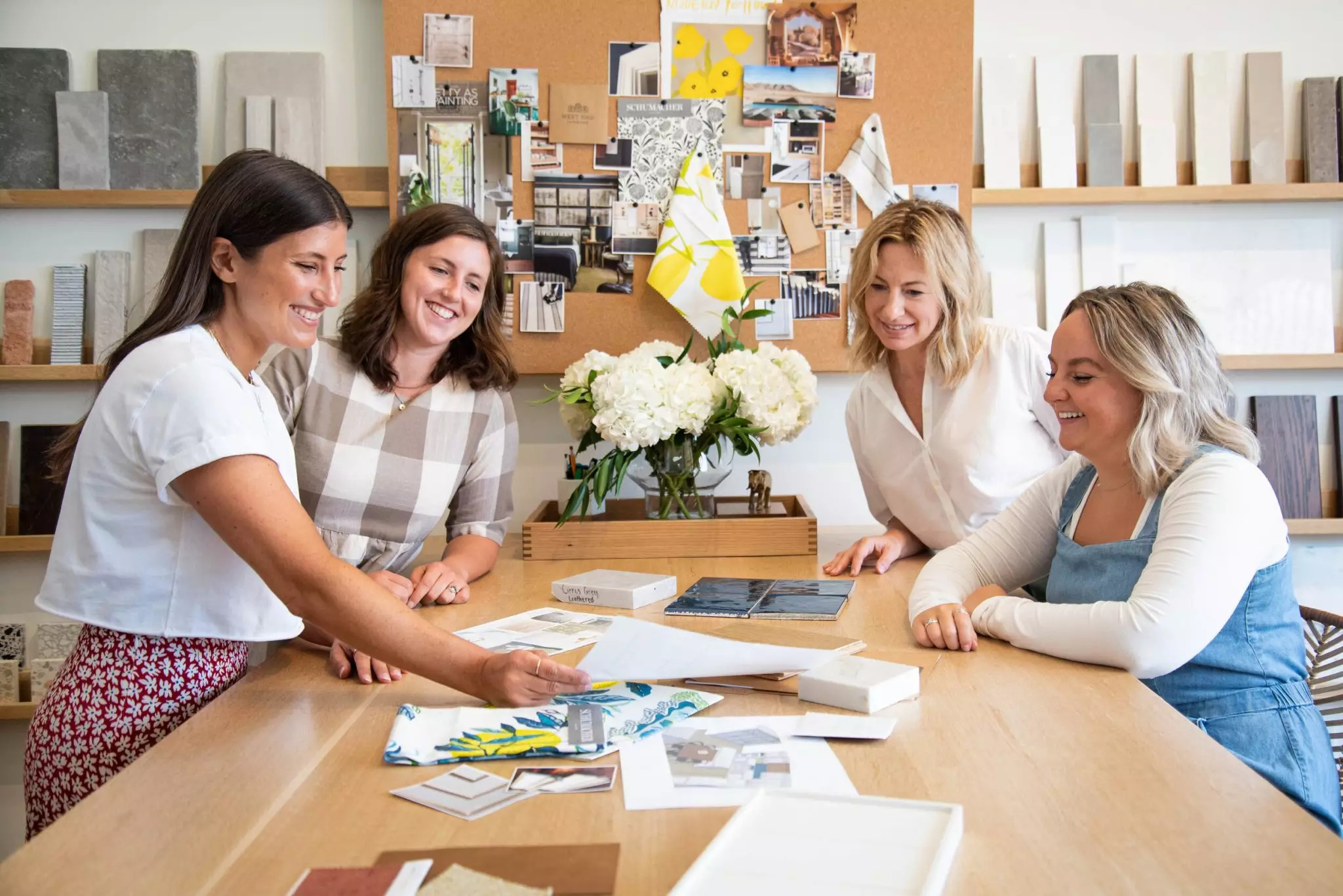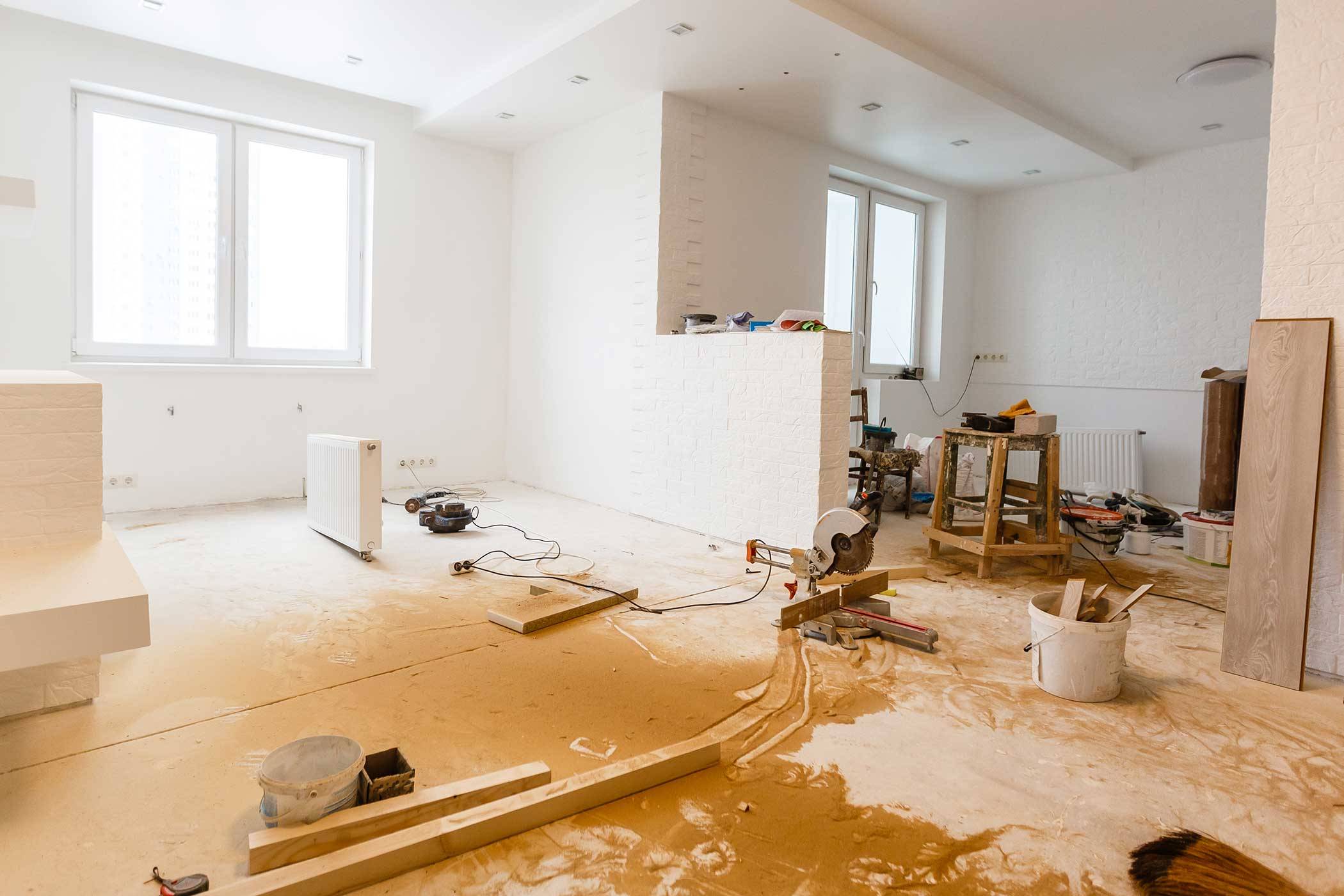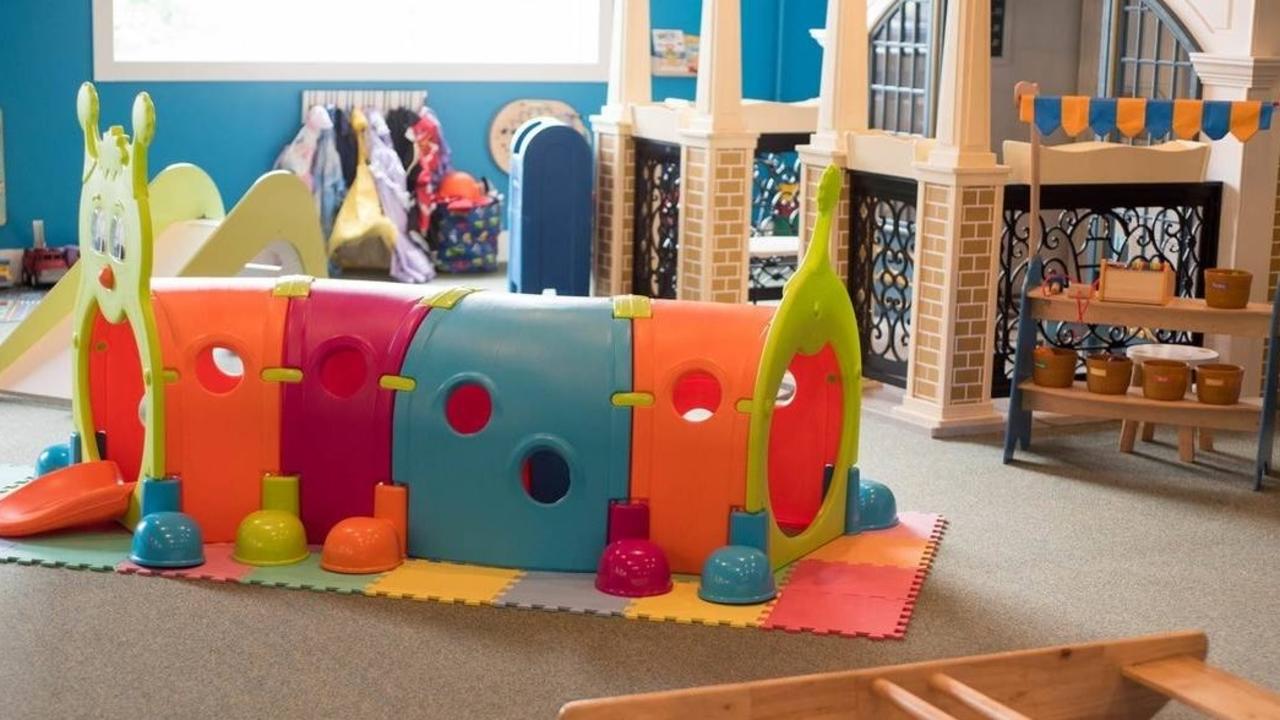Home>Interior Design>How To Start A Business In Interior Design


Interior Design
How To Start A Business In Interior Design
Modified: January 19, 2024
Learn how to start a successful business in interior design with expert tips and guidance. Discover the key steps, skills, and strategies needed to thrive in the dynamic field of interior design.
(Many of the links in this article redirect to a specific reviewed product. Your purchase of these products through affiliate links helps to generate commission for Storables.com, at no extra cost. Learn more)
Introduction
Welcome to the exciting world of interior design! If you’re passionate about creating beautiful and functional spaces, starting your own interior design business can be a fulfilling and lucrative endeavor. Whether you have formal training in interior design or have a natural knack for it, this article will guide you through the steps to start your own interior design business.
Interior design is all about transforming spaces into unique and personal environments. As an interior designer, you have the opportunity to work with different clients, understand their needs and preferences, and bring their visions to life. From residential to commercial projects, the possibilities are endless.
However, before diving into the business aspect, it’s essential to have a clear understanding of what you want to specialize in. Interior design is a broad field, and finding your niche will differentiate you from other designers and help you target the right clientele. Whether it’s residential design, commercial spaces, or specific styles like modern or traditional, defining your niche will help you focus your efforts and become an expert in your chosen area.
Market research is another crucial step in starting an interior design business. By understanding market trends, identifying your target audience, and analyzing the competition, you’ll be able to position your business strategically and tailor your services to meet the needs of your clients. This research will also help you determine the pricing for your services, ensuring you remain competitive in the market.
Once you have a clear idea of your niche and target market, it’s time to develop a comprehensive business plan. This plan will outline your business objectives, marketing strategies, financial projections, and operational procedures. It will serve as a roadmap for your business and help you stay focused and organized throughout your entrepreneurial journey.
Registering your business is the next step in making your interior design business official. Check with your local authorities to understand the requirements for registering your business name, obtaining any necessary licenses or permits, and setting up the appropriate legal structure. This will help establish your credibility and professionalism as a business.
Creating a functional workspace is vital, as it will be the hub of your operations. Whether you choose to work from home or rent a commercial space, ensure that your workspace reflects your style and provides a comfortable and inspiring environment for you and your clients.
Building a portfolio is essential for showcasing your skills and attracting potential clients. Create a collection of your best work, complete with before and after photos and detailed descriptions. This portfolio will act as a visual representation of your abilities, allowing clients to see your unique style and expertise.
To establish your brand, create a compelling logo, professional website, and engaging social media presence. Your brand should accurately represent your style, values, and services. Consistency in branding across all platforms will help build recognition and trust in your business.
Networking and collaboration are key in the interior design industry. Attend industry events, join professional associations, and connect with other designers, contractors, and suppliers. Collaborating with these professionals can lead to referrals and valuable partnerships that will benefit your business in the long run.
Marketing your services is crucial to reach potential clients. Develop a marketing strategy that includes online and offline advertising, social media campaigns, and industry collaborations. Utilize your website, blog, and social media platforms to share valuable content and showcase your expertise.
Finally, staying updated on the latest trends, technologies, and industry advancements is vital in the fast-paced world of interior design. Continuous learning and professional development will help you stay ahead of the curve and offer innovative solutions to your clients.
Starting an interior design business requires dedication, creativity, and business acumen. But with the right steps and a passion for design, you can turn your love for interior spaces into a successful venture. So let’s dive into each step in more detail and equip you with the knowledge and skills to start your own interior design business.
Key Takeaways:
- Defining a niche, conducting thorough market research, and developing a comprehensive business plan are crucial steps in establishing a successful interior design business. These foundational elements set the stage for differentiation, strategic positioning, and long-term success.
- Building a strong brand presence, effective marketing, and staying updated on trends and technology are essential for attracting clients, fostering industry connections, and delivering innovative design solutions. Embracing creativity, continuous learning, and networking are key to thriving in the competitive world of interior design.
Read more: How To Start A Furniture Business
Step 1: Define Your Business Niche
One of the first and most important steps in starting an interior design business is defining your niche. Your niche will set you apart from other interior designers and help you attract the right clients who align with your expertise and style.
Consider your strengths, interests, and passions within the field of interior design. Do you have a flair for residential design? Are you more drawn to commercial spaces like offices or retail stores? Are you particularly skilled in a specific style, such as contemporary, minimalist, or traditional?
By identifying your niche, you can focus your efforts on becoming an expert in that area. This specialization allows you to offer unique insights, innovative solutions, and a depth of knowledge to your clients. It also positions you as a go-to expert in your chosen niche.
Furthermore, defining your niche helps to narrow down your target audience. Instead of trying to be a jack-of-all-trades, you can tailor your services and marketing efforts to the specific needs and preferences of your ideal clients.
When choosing your niche, also consider the market demand and competition in your area. Is there a market gap that you can fill with your specialized services? Is there a growing need for interior designers with expertise in a particular niche?
Take the time to research and understand the preferences and trends within your chosen niche. Stay up to date with industry publications, attend trade shows and events, and follow influential designers and design firms. This knowledge will help you stay ahead of the curve and offer the latest design solutions to your clients.
Remember, your niche should be something you are passionate about and enjoy working on. Your passion and enthusiasm will shine through in your work and attract clients who resonate with your style and expertise.
Once you have defined your niche, make sure to clearly communicate it in your brand messaging and marketing materials. Use your website, social media platforms, and professional networking to showcase your expertise and highlight the specific services you offer. This will help attract clients who are specifically looking for the services and style that you specialize in.
By defining and embracing your niche, you can position yourself as a unique and sought-after interior designer. Your specialized expertise will set you apart in a crowded market and attract clients who appreciate and value your distinct skills.
Step 2: Conduct Market Research
Market research is a crucial step in starting any business, and the interior design industry is no exception. Conducting thorough market research will provide you with valuable insights about your target audience, industry trends, and competitive landscape.
Start by identifying your target market. Determine who your ideal clients are and understand their demographics, preferences, and needs. Are you targeting homeowners, business owners, or both? What age group, income level, and lifestyle do they belong to? Understanding your target audience will help you tailor your services and marketing efforts to meet their specific requirements.
Next, analyze the demand for interior design services in your area. Look at the real estate market, construction projects, and other factors that may influence the demand for interior design services. Identify any gaps or opportunities for your business to fill.
It’s also important to research your competition. Identify other interior designers and design firms in your area who offer similar services or cater to the same target market. Study their portfolios, website, pricing, marketing strategies, and reputation. This research will help you understand what sets you apart from the competition and identify ways to differentiate your business.
Additionally, keep a close eye on industry trends and developments. Stay up to date with the latest design styles, materials, and technologies. This knowledge will not only ensure that you can offer innovative and up-to-date solutions to your clients but also help you identify potential gaps or niches within the industry that you can exploit.
Market research will also help you determine the pricing for your services. Analyze the pricing structures of other interior designers and assess the value you bring to your clients. Remember, your pricing should be competitive while reflecting the quality of your work and the expertise you offer.
When conducting market research, consider utilizing both primary and secondary research methods. Primary research involves directly interacting with potential clients through surveys, interviews, or focus groups. This method allows you to gather firsthand insights and feedback specific to your target market. Secondary research involves analyzing existing data, industry reports, and online resources to gather information about the industry as a whole.
Market research is an ongoing process. As you grow your business, continue to gather feedback from your clients, monitor industry trends, and assess your competition. This will help you stay responsive to market changes and adjust your strategies accordingly.
By conducting thorough market research, you will gain a deep understanding of your target audience, industry dynamics, and competitive landscape. This knowledge will be invaluable as you develop your business strategies, position your brand, and attract the right clients.
Step 3: Develop a Business Plan
A business plan is a comprehensive document that outlines your goals, strategies, and financial projections for your interior design business. Developing a well-crafted business plan is essential for setting a solid foundation and mapping out the path to success.
Start by clearly defining your business objectives. What do you want to achieve with your interior design business? Do you want to become a go-to designer for high-end residential projects? Are you aiming to specialize in sustainable design for commercial spaces?
Next, craft a mission statement that captures the essence of your business. Your mission statement should convey your unique value proposition and the core principles that guide your work. It serves as a compass, keeping you focused on your purpose and ensuring consistency in your business decisions.
Outline your target market and customer profiles in your business plan. Describe the demographics, psychographics, and specific needs of your ideal clients. This information will help you tailor your marketing strategies and develop personalized services that resonate with your target audience.
Consider the marketing and sales strategies you’ll employ to reach your target market. Will you focus on social media marketing, networking events, or traditional advertising? How will you differentiate yourself from competitors and position your services as the best choice for potential clients?
Financial planning is a crucial aspect of your business plan. Estimate your startup costs, including equipment, software, licenses, marketing expenses, and any space renovations or rentals. Determine your pricing structure and project your expected revenue based on the anticipated volume of clients and projects.
Additionally, outline your operating expenses, including overhead costs, salaries, and utilities. Conduct a break-even analysis to determine the point at which your revenue will cover your expenses and you’ll start making a profit.
Consider the legal and administrative aspects of your business as well. Determine the legal structure of your business, whether it’s a sole proprietorship, partnership, or LLC. Research and understand the licenses, permits, and insurance requirements for operating an interior design business in your area.
Your business plan should also include an overview of your team, their roles, and their qualifications. If you plan on collaborating with subcontractors or partnering with other professionals, outline those relationships as well.
Lastly, set specific goals and milestones for your business. Define short-term and long-term objectives that are measurable and time-bound. This will help you stay focused and motivated as you work towards achieving your vision.
Remember, a business plan is a dynamic document that can be adjusted and refined as your business evolves. Regularly review and update your plan to reflect changes in the market, industry trends, and internal developments.
A well-developed business plan serves as a roadmap, providing clarity and direction for your interior design business. It helps you make informed decisions, set realistic goals, secure financing if needed, and ultimately, achieve success and profitability.
Step 4: Register Your Business
Registering your interior design business is an important step in establishing its legal and professional status. This process ensures that you comply with local laws and regulations and presents your business as credible and legitimate.
The specific requirements for registering your business may vary based on your location, so it’s important to research and understand the necessary steps in your area. Here are some general guidelines to consider:
1. Business Name: Choose a business name that reflects your brand and resonates with your target audience. Ensure that the name is unique and not already in use by another business. Check with your local business registry or commerce department to verify the availability of the name.
2. Legal Structure: Decide on the legal structure for your business, such as a sole proprietorship, partnership, limited liability company (LLC), or corporation. Each structure has its own benefits and implications, so consult with a legal advisor or accountant to determine the best option for you.
3. Business License: Check if you need a specific license to operate as an interior designer in your area. Some jurisdictions may require a professional license or certification to provide design services. Research the local licensing requirements and ensure that you meet all the necessary qualifications.
4. Employer Identification Number (EIN): If you plan to hire employees or engage in certain business activities, you may need to obtain an EIN from the government. This unique identification number will be used for tax purposes and to identify your business entity.
5. Permits and Certifications: Depending on your location and the nature of your projects, you may need to obtain permits or certifications related to building codes, fire safety, or environmental regulations. Research the specific requirements for your area to ensure compliance.
6. Business Insurance: Consider obtaining business insurance to protect yourself and your clients in case of accidents, property damage, or legal claims. Consult with an insurance professional to assess the appropriate coverage for your interior design business.
7. Professional Memberships: Joining professional associations and organizations related to interior design can provide valuable networking opportunities and access to resources. Research and consider joining relevant industry associations to stay connected with the design community and enhance your professional credibility.
Once you have completed the necessary steps for registering your business, make sure to display any required licenses or certifications prominently in your office or on your website. This will demonstrate to clients and prospective clients that you are a qualified professional.
Remember, it is crucial to consult with legal and financial professionals to ensure compliance with all local laws and regulations. They can guide you through the registration process and provide specific advice tailored to your business.
Registering your interior design business not only establishes its legality but also enhances your professional reputation. It instills confidence in clients, allowing them to trust that they are working with a credible and trustworthy design professional.
Read more: How To Start A Construction Business
Step 5: Set Up Your Workspace
Setting up a functional and inspiring workspace is essential for the success of your interior design business. Your workspace should reflect your style, provide a productive environment for creativity, and accommodate the various tasks involved in running your business.
Here are some key aspects to consider when setting up your interior design workspace:
1. Location: Decide where you want to set up your workspace. This could be a dedicated office space in your home, a shared studio, or a commercial office. Consider factors like convenience, accessibility for clients, and the ability to have a separate space for meetings or consultations.
2. Layout and Design: Design your workspace layout in a way that maximizes productivity and creativity. Consider the flow of your work processes and organize your space accordingly. Ensure that you have a designated area for client meetings and presentations.
3. Furniture and Equipment: Invest in comfortable and ergonomic furniture, such as a desk, chair, and storage solutions, to create an efficient and organized workspace. Consider the equipment you’ll need, such as a computer, printer, drawing tools, drafting table, and lighting. Choose furniture and equipment that align with your design aesthetic and functional needs.
4. Materials and Samples: As an interior designer, you’ll need a wide range of materials and samples to showcase to your clients. Set up an organized storage system for fabric swatches, paint samples, flooring samples, and other material options. Consider using shelves, bins, and labeled containers to keep everything easily accessible and visually appealing.
5. Technology and Software: Invest in the necessary technology and software tools to streamline your design and business processes. This may include interior design software for creating 2D and 3D visualizations, project management software, invoicing and accounting tools, and a reliable internet connection for online research and communication.
6. Inspiring Elements: Infuse your workspace with elements that inspire and stimulate creativity. Add artwork, plants, or personal items that inspire you and reflect your design style. Consider incorporating a mood board or idea wall to display design concepts and inspiration for ongoing projects.
7. Organization System: Develop an organizational system that allows you to efficiently manage client projects, contracts, and paperwork. Consider using digital organization tools like project management software or scanner apps to keep track of important documents. Create a filing system for physical documents, ensuring that it is easily accessible and well-organized.
8. Comfort and Ambience: Ensure that your workspace is comfortable and promotes a positive work environment. Pay attention to lighting, temperature control, and noise level to create an atmosphere that allows you to focus and thrive. Consider adding comfortable seating for client consultations and a welcoming reception area for visitors.
9. Safety and Regulations: Familiarize yourself with safety regulations and guidelines, especially if you plan to have clients visit your workspace. Ensure that your workspace is compliant with fire safety regulations, accessibility requirements, and any other applicable laws.
Remember that your workspace is a reflection of your brand and professionalism. It should inspire you, impress your clients, and provide a functional environment for creativity and productivity. Take the time to design and set up your workspace thoughtfully, and it will contribute to the overall success of your interior design business.
Tip: Research your target market and competition, create a solid business plan, and establish a strong online presence to showcase your work and attract clients.
Step 6: Build a Portfolio
A portfolio is a crucial tool for showcasing your skills, expertise, and creativity as an interior designer. It acts as a visual representation of your work and serves as a powerful marketing tool to attract new clients. Building a visually stunning and comprehensive portfolio is essential for establishing credibility and winning projects.
Here are some steps to build an impressive portfolio:
1. Select Your Best Work: Review your past projects and select the ones that best represent your style, skills, and range of design abilities. Choose a variety of projects that showcase different design styles, spaces, and budgets. Aim for a balance between residential and commercial projects, if applicable.
2. Before and After: Include before and after photos of your projects to demonstrate the transformative power of your design work. This helps potential clients visualize the impact of your design solutions and showcases your ability to take a space from outdated or underwhelming to stunning and functional.
3. High-Quality Photography: Invest in professional photography or ensure that you capture high-quality images of your completed projects. Good photography is essential for showcasing the details, textures, and colors of your designs. It helps convey the level of craftsmanship and attention to detail that you bring to your projects.
4. Include Descriptions and Details: Accompany each project with a detailed description that explains your design approach, challenges overcome, and unique aspects of the project. Share information about the client’s goals, your design concept, materials used, and any special features or customization. This provides potential clients with insights into your design process and attention to their specific needs.
5. Variety of Elements: Include a variety of design elements in your portfolio, such as floor plans, mood boards, color schemes, furniture layouts, and renderings. This demonstrates your ability to create cohesive and visually appealing designs. Showcasing different elements helps clients understand how you develop and present your design concepts.
6. Digital and Physical Formats: Build a digital portfolio that can be easily shared with clients via email or uploaded to your website. Consider creating a printed version as well, especially if you plan to meet clients in person. Having a physical portfolio allows clients to have a tactile experience and see the quality of your work up close.
7. Update Regularly: Your portfolio should be a work in progress, continuously updated with your latest projects. As you complete new projects, replace older ones with more current and relevant examples. This shows potential clients that you are actively working and growing in your field.
8. Presentation: Pay attention to the presentation of your portfolio. Consider the layout, sequencing of projects, and overall aesthetic appeal. Use professional design software or templates to create a cohesive and visually pleasing portfolio that reflects your personal brand and design style.
9. Online Presence: Showcase your portfolio on your website and social media platforms. Create an online gallery or portfolio section that is easy to navigate and visually captivating. Additionally, consider using online platforms or directories specific to the interior design industry, where potential clients can discover and explore your work.
10. Client Testimonials: Include testimonials or reviews from satisfied clients to reinforce the quality of your work and the positive experience clients have had working with you. These testimonials add credibility and provide social proof of your skills and professionalism.
Remember, your portfolio is a reflection of your design style, problem-solving abilities, and creativity. Building a strong portfolio takes time and effort, but it is a powerful tool for attracting clients and showcasing your expertise as an interior designer.
Step 7: Establish Your Brand
Establishing a strong brand identity is essential for standing out in the competitive world of interior design. Your brand represents who you are as a designer and what sets you apart from others in the industry. Crafting a compelling brand will help attract your ideal clients and build trust and recognition for your interior design business.
Here are some steps to establish your brand:
1. Define Your Brand Values: Determine the core values that guide your interior design business. Consider what drives you as a designer, the principles that shape your work, and the type of experience you want to offer your clients. Your brand values will form the foundation of your business and attract clients who resonate with your vision.
2. Identify Your Unique Selling Proposition (USP): Define what sets you apart from other interior designers. Identify your unique strengths, expertise, or specialized services that make you stand out in the market. Your USP should communicate the value you offer to clients and why they should choose you over competitors.
3. Design a Professional Logo: Invest in a professionally designed logo that reflects your brand identity. Your logo should be visually appealing, unique, and memorable. It should encompass the essence of your style and create a strong visual association with your interior design business.
4. Develop a Consistent Visual Identity: Establish a consistent visual identity across all your branding materials. This includes choosing a color palette, fonts, and design elements that align with your brand personality. Consistency in your visual identity builds recognition and reinforces your brand image in the minds of potential clients.
5. Create a Compelling Tagline: Craft a tagline that encapsulates your brand’s essence and communicates your unique value proposition. A memorable and concise tagline can help differentiate you from other designers and leave a lasting impression on potential clients.
6. Professional Website: Create a professional website that showcases your design portfolio, services, and brand story. Your website should have an aesthetically pleasing design and be easy to navigate. Include relevant information about your business, contact details, and an option for potential clients to reach out to you.
7. Engage on Social Media: Utilize social media platforms to build your brand presence and engage with your target audience. Share valuable content related to interior design, showcase your projects, and interact with potential clients. Choose the social media platforms where your target audience is most active and create a consistent and engaging presence.
8. Consistent Brand Voice: Develop a consistent brand voice that reflects your personality and resonates with your target audience. Ensure that your written communications, such as website content, social media posts, and client correspondence, are in line with your brand values, tone, and approach.
9. Networking and Partnerships: Collaborate with other professionals in the industry to enhance your brand visibility. Network with architects, contractors, suppliers, and other designers to build relationships and explore potential partnerships. Building a strong professional network can lead to referrals and expand your reach within the industry.
10. Deliver Consistent Client Experience: A crucial aspect of your brand is the experience you provide to your clients. Ensure that every interaction, from the initial consultation to the final project delivery, reflects your brand values and exceeds client expectations. Consistent excellence in your work and customer service will solidify your brand reputation.
Establishing your brand requires consistency, authenticity, and a clear understanding of your target audience. Develop a brand that showcases your unique strengths, resonates with your ideal clients, and differentiates you from competitors. With a solid brand foundation, you can build credibility, attract your ideal clients, and elevate your interior design business to new heights.
Step 8: Network and Collaborate
Networking and collaboration are essential for success in the interior design industry. Building strong professional relationships and leveraging collaborations can open doors to new opportunities, expand your client base, and enhance your expertise as a designer. Here’s how you can effectively network and collaborate in the field of interior design:
1. Attend Industry Events: Participate in trade shows, conferences, and industry events tailored to interior design. These events provide opportunities to connect with fellow designers, suppliers, manufacturers, and potential clients. Engage in conversations, exchange ideas, and establish valuable connections within the industry.
2. Join Professional Associations: Become a member of professional associations and organizations related to interior design. These associations offer networking events, educational resources, and access to industry news and trends. Being part of a professional community allows you to stay connected, build relationships, and collaborate with like-minded professionals.
3. Connect Online: Utilize social media platforms and online design communities to connect with industry professionals. Join online forums, design groups, and LinkedIn communities to engage in conversations, seek advice, and share your expertise. Build relationships with influencers, bloggers, and industry leaders through online interaction.
4. Collaborate with Other Designers: Collaborating with other designers can bring fresh perspectives and expand your creative possibilities. Seek opportunities to team up with fellow designers on projects or participate in design competitions. Collaborations not only enhance your portfolio but also expose you to new ideas and approaches in the field of interior design.
5. Network with Architects and Contractors: Build relationships with architects, contractors, and other professionals involved in the construction and design industry. Attend construction industry events, reach out for collaborations, and establish partnerships. By networking with these professionals, you can tap into their networks and gain access to a broader client base.
6. Forge Relationships with Suppliers and Manufacturers: Establish strong relationships with suppliers, manufacturers, and vendors. They can become valuable partners, providing you with access to unique materials and products. A strong network of suppliers and manufacturers can also help you stay updated on the latest design trends and innovations.
7. Seek Referrals: Encourage referrals from past clients, fellow designers, and industry contacts. Word-of-mouth recommendations can greatly expand your client base and credibility. Maintaining strong relationships with satisfied clients and industry professionals will lead to valuable referrals and repeat business.
8. Collaborate with Contractors and Tradespeople: Collaborating with contractors and tradespeople is crucial to ensure smooth project execution. Establish good working relationships with experienced contractors, electricians, plumbers, and other tradespeople. Effective collaboration with these professionals can help you deliver high-quality projects on time and within budget.
9. Offer Value to Others: Build a strong network by offering value to others in the industry. Share your knowledge, give constructive feedback, and be supportive of fellow designers. By offering your expertise and being a resource for others, you establish yourself as a helpful and respected professional in the field.
10. Stay Engaged in Design Communities: Stay engaged in design communities, both online and offline. Participate in design forums, attend webinars and workshops, and contribute to design discussions. Engaging with the design community keeps you updated on industry trends, fosters learning and growth, and enhances your professional network.
Networking and collaboration are key ingredients for success in the interior design industry. By actively engaging with professionals, attending industry events, and fostering collaborations, you can expand your network, develop valuable partnerships, and enhance your reputation as a skilled designer.
Read more: How To Start A Woodworking Business
Step 9: Market Your Services
Marketing is an essential component of running a successful interior design business. It helps you reach your target audience, showcase your unique offerings, and attract clients who appreciate your design expertise. Here are some key steps to effectively market your interior design services:
1. Define Your Target Audience: Clearly identify your target audience – the individuals or businesses most likely to benefit from your services. Consider demographics, psychographics, and their specific design needs. By understanding your target audience, you can personalize your marketing efforts to resonate with them.
2. Develop a Strong Brand Presence: Create a professional, visually appealing brand identity that aligns with your unique style and values. Use consistent branding elements across all platforms, including your logo, website, social media, and marketing materials. Consistency builds recognition and establishes trust with your audience.
3. Professional Website: A well-designed website is essential for showcasing your portfolio, sharing information about your services, and capturing leads. Ensure that your website is mobile-friendly, easy to navigate, and optimized for search engines. Incorporate high-quality visuals and compelling content that tells your brand story and highlights your expertise.
4. Search Engine Optimization (SEO): Optimize your website and online content to improve your visibility in search engine results. Research relevant keywords, use them strategically throughout your website, and create valuable content that addresses the needs and questions of your target audience. This helps drive organic traffic to your site and increases your chances of being found by potential clients.
5. Social Media Marketing: Utilize social media platforms like Instagram, Facebook, and Pinterest to showcase your work, engage with your audience, and build an online following. Regularly post high-quality images of your projects, share design tips, and engage with comments and messages from potential clients. Social media allows you to connect with your audience on a personal level and establish your brand as a trusted design authority.
6. Content Marketing: Create valuable and informative content to demonstrate your expertise and attract potential clients. Write blog posts, create videos, or host webinars that educate your audience on design trends, tips, and techniques. Share your content on your website, social media platforms, and through email newsletters to establish yourself as a thought leader and build credibility.
7. Online Directories and Platforms: List your business in online directories and platforms specific to the interior design industry. Examples include Houzz, Architizer, and Dering Hall. These platforms provide exposure and connect you with potential clients seeking interior design services.
8. Client Testimonials and Case Studies: Request feedback and testimonials from satisfied clients and showcase them on your website and social media. Client testimonials build trust and provide social proof of your capabilities. Additionally, consider creating case studies that highlight your design process, challenges overcome, and successful outcomes to demonstrate the value you bring to your clients.
9. Networking and Referrals: Leverage your professional network and clients for referrals. Let your contacts know about your services and ask for referrals from satisfied clients. Attend industry events, join local business groups, and be an active participant in networking opportunities to expand your reach and build relationships with potential referral sources.
10. Collaborate with Influencers or Bloggers: Seek collaborations with relevant influencers or design bloggers. Partnering with influencers who cater to your target audience can expose your work to a broader audience and increase brand awareness. Collaborations can take the form of joint projects, sponsored content, or guest blogging.
Remember, effective marketing requires consistency, creativity, and adaptability. Continuously monitor and analyze your marketing efforts to understand what strategies are working and make any necessary adjustments. By effectively marketing your services, you can increase your brand visibility, attract your ideal clients, and elevate your interior design business.
Step 10: Stay Updated on Trends and Technology
In the ever-evolving world of interior design, staying updated on trends and technology is essential to remain competitive and provide the best possible solutions for your clients. By continuously seeking knowledge and embracing new advancements, you can deliver innovative designs and position yourself as an expert in the industry.
Here are some key steps to stay updated on trends and technology in interior design:
1. Research Design Publications: Subscribe to design magazines, read design blogs, and follow industry publications. These resources offer insights into the latest trends, emerging styles, and innovative design solutions. Stay informed about design events, exhibitions, and product launches to stay ahead of the curve.
2. Attend Design Trade Shows and Events: Participating in design trade shows and events provides firsthand exposure to new products, materials, and design concepts. These events also offer opportunities to network with industry professionals and engage in conversations about the latest trends and technologies.
3. Join Design Communities and Associations: Join professional design communities and associations to connect with like-minded professionals, share knowledge, and stay updated on industry developments. These communities often host workshops, seminars, and webinars that provide valuable learning opportunities and access to industry experts.
4. Follow Influential Designers and Thought Leaders: Follow influential interior designers and thought leaders on social media platforms, subscribe to their newsletters, and engage with their content. These individuals often share their design insights, project updates, and industry predictions, keeping you informed about the latest trends and advancements.
5. Engage in Continuing Education: Pursue continuing education courses, workshops, or certifications to enhance your knowledge and skills. Many organizations and institutions offer programs specifically tailored for interior designers, covering topics such as sustainable design, new technologies, and industry best practices.
6. Embrace Technology Tools: Explore and embrace the latest technology tools that can streamline your design process and enhance creativity. Interior design software, virtual reality (VR), and augmented reality (AR) tools can assist with 3D renderings, space planning, and client presentations. Stay updated on new software versions and capabilities to leverage their full potential.
7. Connect with Industry Suppliers and Manufacturers: Stay connected with suppliers and manufacturers to learn about new materials, finishes, and products available in the market. Attend manufacturer presentations, seminars, or virtual events to stay informed about the latest innovations in materials and technology.
8. Follow Color and Pantone Trends: Stay updated on color trends and Pantone color of the year announcements. Understanding the latest color trends can guide your material and finish selections, ensuring your designs are modern and relevant. Incorporating popular colors can also help attract clients who are seeking fresh and contemporary designs.
9. Experiment and Innovate: Embrace experimentation in your design process and be open to trying new approaches. Innovation often stems from pushing boundaries and thinking outside the box. Allow yourself to explore new design styles, techniques, and combinations to create unique and personalized spaces for your clients.
10. Network and Collaborate: Engage with other designers, contractors, and industry professionals to share insights, exchange ideas, and collaborate on innovative projects. Joining forces with others in the industry can lead to fresh perspectives and the exploration of new design possibilities.
By staying updated on trends and technology, you can offer cutting-edge design solutions and exceed your clients’ expectations. Embrace a lifelong learning mentality, always striving to expand your knowledge and skills. Continuously adapt to the evolving design landscape to position yourself as a forward-thinking and versatile interior designer.
Conclusion
Starting and running your own interior design business can be an exciting and rewarding journey. By following the steps outlined in this guide, you can lay a strong foundation for success in the industry. From defining your business niche to staying updated on trends and technology, each step plays a critical role in establishing yourself as a trusted and sought-after interior designer.
Defining your niche allows you to carve out a unique position in the market and attract clients who align with your expertise and style. Conducting thorough market research helps you understand your target audience, stay ahead of industry trends, and position your services strategically. Developing a comprehensive business plan ensures that you have a clear roadmap and the necessary strategies to achieve your goals.
Registering your business and setting up a functional workspace create a professional and credible image for your brand. Building a portfolio showcases your skills, style, and previous projects, helping you win over potential clients. Establishing a strong brand identity and effectively marketing your services create visibility and attract your ideal clients to your business.
Networking and collaborating with industry professionals open doors to new opportunities, referrals, and valuable partnerships. It also helps you stay connected with the latest design trends, technologies, and insights. Finally, staying updated on trends and technology ensures that you consistently deliver innovative and relevant design solutions to your clients.
Remember, building a successful interior design business takes time, dedication, and continuous learning. Embrace each step of the process, stay passionate about your craft, and always seek to exceed client expectations. With a refined business strategy, a strong brand presence, and a commitment to staying current, you can thrive as an interior designer and create beautiful, functional spaces that inspire and delight.
Frequently Asked Questions about How To Start A Business In Interior Design
Was this page helpful?
At Storables.com, we guarantee accurate and reliable information. Our content, validated by Expert Board Contributors, is crafted following stringent Editorial Policies. We're committed to providing you with well-researched, expert-backed insights for all your informational needs.














0 thoughts on “How To Start A Business In Interior Design”